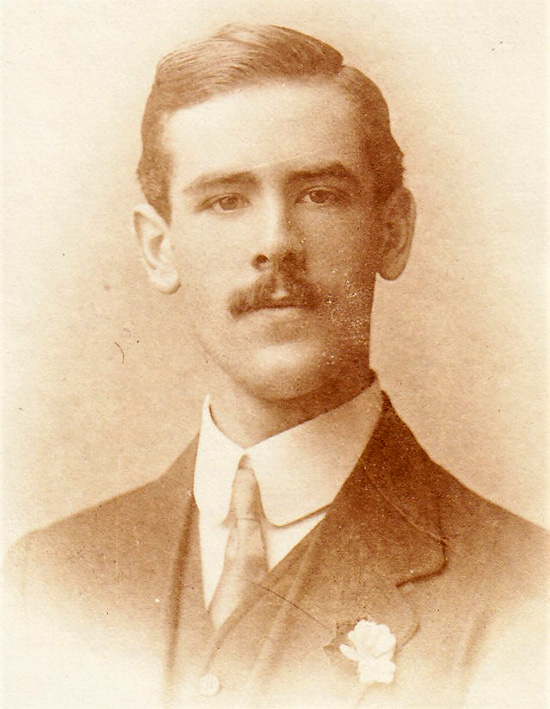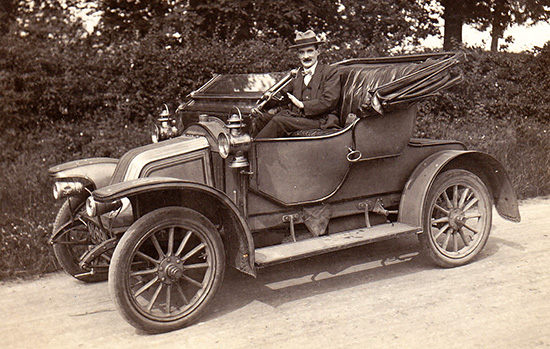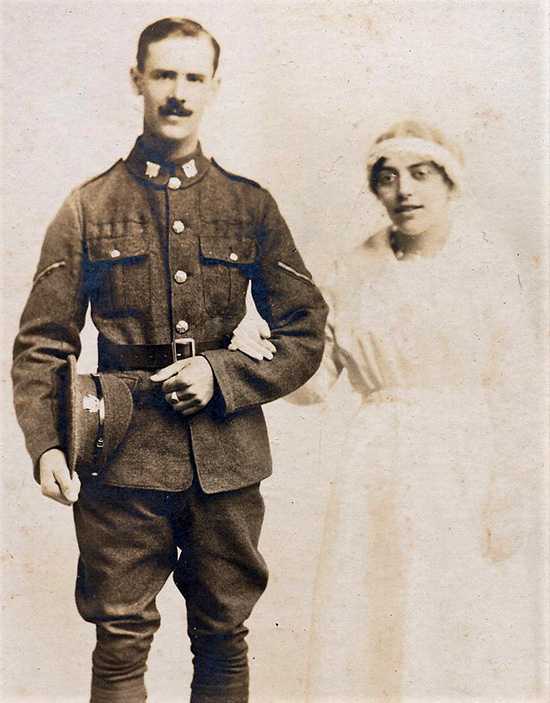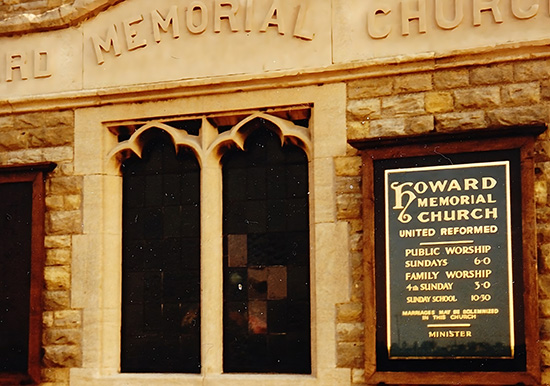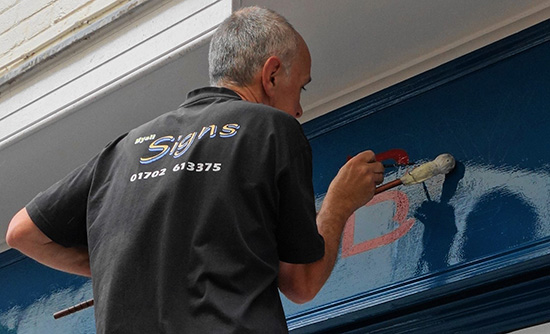
Illustration by Claire MacDonald of Alfred's bamboo mahl stick, which he used to rest his hand on while signwriting.
Master Signwriter
My grandfather, Alfred Gough, had many challenges thrown at him throughout the course of his long life. Born in 1893, he lived and worked through two world wars, adopted a daughter because he thought he was infertile, lost that treasured child through enemy action, and then, when he was in his seventies, he had to act as a father figure once more because he moved in and helped our divorced Mum bring us up.
My brother, Marc, and I knew nobody else that had a substitute dad like us. Yes, a grandparent may need looking after because they are too old to be safe on their own, but to have gramps in his seventies and eighties trying to govern teenagers, well, it was unusual. I'm not sure that we were appreciative at the time, so this retrospective is my chance to say thank you.
Alfred was one of five children born to Leah and Thomas Gough - three were stillborn or miscarried. Thomas was a journeyman cooper making barrels for local breweries until he died from a heart condition when he was 35 and Alfred was six years' old. Leah became a seamstress to help keep the family and the children were encouraged to leave home to fend for themselves as soon as possible.
All of the Goughs were 'ever so humble', and each became a tradesperson or went into service. Alf's oldest brother Tom, became a driver/chauffeur, first in the army driving along enemy lines, then for various rich people including Jesse Boot - the man who propelled Boots pharmacy into a leading national retailer. While older sister Sophie became a companion and carer to well-to-do families. Alfred was busy learning the trade of signwriting until he was called up for the First World War.
Alfred, like his father, also had a heart condition and so was considered 'unfit for active service'. He then lived to the ripe old age of 98! He was sent to Aldershot barracks where he trained to be an army cook catering for hundreds of a servicemen. We know from letters he exchanged with his long-time girlfriend, Florence Rose Cox (Rosie) that he was teased by the other soldiers for being teetotal and rather shy with the girls. We appreciated his culinary skills 60 years' later when he served up spotted dick and custard for Marc and I, and other soldierly fare like bangers and mash.
Alfred was granted three days leave in May 1917 to marry Rosie in their home town of Bedford. A year later, in August 1918, he left the army with the words 'Qualified Master Cook. Reliable, honest and industrious' written on his discharge papers. He now had to replace the four shillings a day he received as a lance corporal. Alfred decided to enter the world of self-employment and became a signwriter.
Alfred rarely spoke about his work but he did say he felt he had never charged enough. He was too diffident to make excess profit. He had many qualities and was expert in many fields but would never show them off or take full advantage of them.
In fact, Alfred was quite dour, taciturn and didn't smile much. If you stuck around and got to know him, you might eventually find out that he was a Master Signwriter and Gilder, an accomplished musician, a church deacon, who could do any do-it-yourself task, was a devoted family man and absolutely dependable. But you would never glean that from a short meeting with him.
His persistence, application, willingness to do favours for free, reasonable pricing and his perfectionism meant that he did make a success of his business. He was perhaps unusual as a signwriter, in that he could paint pictures as well. Alongside is an early signed practice piece of clematises that I found in his loft. This ability, led to commissions to paint 8x5 foot cinema hoarding posters for Bedford's Palace and the Granada in the 1930s and '40s.
In fact he could, and would, do most signwriting tasks. Shop windows would be a typical job. In those days, shop fascias would be designed on drawing boards and then transferred to a panel or canvas. As long as the work wasn't too far from home he would take it on. Alfred could not ride a horse, or a motor bike and certainly couldn't drive a car, so materials, steps and ladders had to be carried from studio to destination by hand-pushed cart.
Alfred eventually earned enough to buy a house near the centre of Bedford at 11 Grove Place. From here, he was in striking distance of most central Bedford jobs. He built a studio at the foot of the garden so that he could share tea breaks and lunch times with Rosie - his intended.
I only saw Alfred's successor, Michael Marriott, signwriting in that same studio. Michael took over the business and the Grove Place studio in the late 1960s. Then, he in turn handed over the business to Stephen, his son.
I remember that part of the preparation process for painting, was to clean and prime the board or metal. Then a long piece of thread was run against a ball of chalk, stretched, attached and tightened across the surface and then flicked so that the chalk transferred itself and made a visible straight white guide line. The letters and words would then be pencilled in before the paint was applied. The chalk line could then be wiped off on completion.
There is a very good, practical set of instruction at www.lettering-daily.com/learning-sign-painting/
By the time I came to ask my grandfather about his work, 30 years had passed since his retirement. A nice surprise came when I was driving him to see the airship hangars at Cardington. We passed a church and he recognised the sign outside as his. Appropriately enough, as Alfred's lifelong church was Howard Congregational Church, Bedford, this last remnant of his work was at Howard Memorial Church. A nice example of gilding work, it is, unfortunately, no longerin situand so the photo alongside will have to act as his memorial piece.
A signwriter who is on a ladder and using a mahl stick both to counterbalance his body weight and rest his hand while painting in Canterbury
Have sticky adhesive, digitally-cut vinyl lettering and labels taken over the role and art of signwriting? There are some companies and shops that want to stand out and to replace those easy fixes with individuality. Now, there is a new wave of artisans learning and applying hand-crafted lettering to shop fascias, ice cream vans, football ground hoardings, anything that needs some long-lasting, distinct, long-lasting advertisements. Professional signwriters' work never have letters that come unstuck and drop off.

Some of Alfred's tools of the trade. The brushes still smell of the linseed oil that the bristles are coated with
